Entering Ecuador: The Live Animal Market in Otavalo
As I’m sure you can tell by now, Colombia treated us very kindly… maybe too much so. Saying goodbye kind of felt like a farewell to a close friend that you feared you would never see again. Our last bus in Colombia took us through long, sparsely populated valleys with roaring rivers down below. The pop up villages that came and went reflected the isolated way of life the hills themselves cultivated, but still felt very Colombian at their core. Ecuador was in our sights all of the sudden, and it’s presence felt entirely unexpected for no logical reason. It was looming silently ahead in the same veiled way that every new country did in our evolving journey. Whenever we crossed a border things felt exciting, mysterious, and somehow always full of limitless potential. That fresh stamp in your passport was like the start of a chapter that was never written down. There was a blank page looking back into your eyes and it was exciting to surmise that you didn’t know what was going to come out of your pen. Every word that would land on the paper came as it was supposed to, letting the natural core of capturing the experience come to the surface as the journey created itself. Eventually we stepped foot on the edge of Colombian soil and walked across a bridge into Ecuador.
We picked the first larger town on the map and decided to get acquainted with our new country in a city called Ibarra. We found some literature that stated there was some good architecture and hand made ice cream, which seemed like a pretty casual way to warm up to a country. The city was represented as a wolf in sheep’s clothing; It has the cobble stone streets, historic colonial architecture, and large open plazas but it also possessed a fast paced, busy energy of a young city milling about. During the day it could be a bit rough around the edges for a tourist dropping in, and didn’t have the kind of draw a city you would spend a great length of time exploring.
We hunted down the city’s famous ice cream shop, Heladería Rosalía Suárez, where Rosalia discovered back in 1897 that she could make a great tasting ice cream treat without using dairy. She did this by adding pure fruit juices and egg whites into large copper bowls on a bed of straw and ice while hand stirring with a large wooden spoon. Naturally, this shop was amazing. We tried a few different samples before settling in on our choices, which were made fresh in the large copper bowls. After that, we scuffled around the town for a while taking in some architecture and discovering that Ecuador had an unexpected passion for Chinese food. That night we dined on Chifa for the first time in a long time, while Ecuadorians enjoyed the lifestyle of a modern day city with old roots.
We had been carefully timing our trip to the area entirely for a special live event that only takes place in the early Saturday morning hours in a mountain city called Otovalo. Since this was about an hour away from where we were staying, we caught a bus in the AM out of Ibarra and were transported back in time to a hub that is accessed by the thousands of indigenous Ecuadorians that live in the mountain villages nearby. The bus station was a busy, chaotic scene complete with lines that didn’t seem to make any sense, food stalls, and lots of Ecuadorians traveling to all parts unknown. We stepped off the bus and immediately gravitated towards one of my favorite businesses in Latin America, a Panaderia. Fresh baked Latin bread, croissants, and sweet treats get me every damn time. After stocking up, we set out walking with our gear to a dreamy hostel (Hotel Riviera Sucre) that Elissa had found run by a German couple that made Otavalo their home due largely in part to love at first site. The city, which is inhabited by roughly 90,000 people, was originally settled in due to the rich volcanic soils the nearby mountains possessed. These nutrient rich soils were ideal for supporting a natural agricultural economy. The volcanic peaks of Imbabura and Cotacachi reach dizzying heights of 4630 meters and 4995 meters, respectively, and provide a beautiful backdrop to the colonial architecture found throughout the city.
We immediately set off exploring this beautiful old city and quickly found out that it was much more up to our speed than Ibarra. Otavalo had a fantastic architectural appeal to it’s beautiful colonial buildings, antique storefronts with large glass windows, ancient doorways with antique locals eying the scene, cobblestone streets, and beautifully dressed Ecuadorian men and women adorned in traditional garb. Otavalo and it’s residents, or Otavaleño, were warm and welcoming people in every interaction we had. I walked right into a tailor’s shop and asked if I could photograph his hands for a project I dreamed up, and without even thinking about it he replied “Si, claro”. Most Otaveño were indigenous, and held onto the customary ways of their culture and predecessors. I felt like a giant amongst the crowd when walking around the noticeably shorter residents, towering over the beautiful faces that were milling about. Their tales were silently told through the deep wrinkles on their honest faces, their piercing eyes, and hardened hands. We instantly melted into the plazas that housed brightly colored churches, open air markets, and food mercados.
My favorite place to be when traveling is surrounded by traditional food. Whether it’s put onto a plate and ready to eat or in it’s most simple, uncooked form on a wooden table waiting to be bought or traded for, food has a special place in my belly. I could spend an entire day, sunrise to sunset, in the depths of a lively mercado watching the action. There isn’t a better place to get the freshest cuts of meat, large bundles of fruits and vegetables, or a quick set lunch of real, whole foods cooked in front of your eyes. Mercados are places that have some of the most honest and genuine transactions on the planet. Food sustains life, and life is preserved through it’s trade in this part of the world. Fiberglass ceilings in the depths of the mercados of Otavalo filtered light in such a way that made my images seem almost ethereal. Every day Otalveño go to these markets to get the ingredients they need for home cooked meals, to grab a quick al muerza, or set up shop to sustain a living from the produce themselves or their family cultivates in the surrounding lands. It’s not uncommon to see a short, sturdy, weathered Otalveña walk past your side with a large bag of potatoes slung over her shoulder and a live chicken under her arm. This mercado had all the ingredients needed to capture my attention, and I would find any excuse to go back to try and soak in that scene.
The first whole day we had in Otavalo was actually spent getting out of the city and up into the mountains. We read that there was an easy way to get to a lake for a birds eye view of Cotacachi, one of the highest peaks in the area. We made our way back to the bus station to get a ride to a tiny village, transferred to a collectivo, and went up into a national park and recreational area. Our gentle old driver dropped us off on the shore of a deep blue colored lake that lives in the crater of a past eruption that surely shook the earth. The deal we struck with the driver was to swing back in around 4 or 5 hours to pick us up lakeside where he left us. The area looked pretty desolate and carried the low season mid-week pace of life without another soul sight. We hiked up a short trail to a restaurant that was perched on a cliff overlooking the lake and took in a sweeping view of the lake and volcano. There weren’t any signs of life at the establishment, so we continued along the driveway and out to the road to hike around the lake for a while. Aside from the occasional hacienda here and there, there was not much life around this stunning setting. We played in the sun for a few hours, watching the colors of the water change with passing clouds. We killed some more time exploring what felt like abandoned homesteads, imagining what living at such a high altitude would be like. Eventually we made our way back to our pick up point, and sure enough our driver had returned to take us back into town to catch a bus back to Otavalo. A casual glance in a mirror let me know that I had severely burned my face in the high altitude sun after a mere 2 hours of partial exposure.
The next day was the big day for our adventures in Otavalo, and it was actually the prime reason we decided to visit the area. On every Saturday the city becomes inundated with families toting extremely large sacks full of mostly hand made textiles, clothing, sculptures, souvenirs, and livestock to sell to the masses. Yes, I wrote livestock. We knew beforehand that the live animal market was going to be the highlight of our visit to the fertile valley so we came emotionally prepared. The dusty streets at 6AM were filled with hundreds of Ecuadorians marching uphill to either shop for or show off their prized pigs, sheep, chickens, cows, ducks, and guinea pigs to prospective buyers. The scene looked a little intimidating from afar; ahead of us was a sea of pea green fedoras with a few small open veins of earth that let shoppers into the swollen field of the animal peddlers. Tiny but tough Otavaleño tried to maneuver freshly purchased 100+ pound pigs while every extremity of live chickens were being examined with the kind of eyes normally found near the sales rack of TJ Maxx. Cars would come to a halt to let a newly purchased cow get walked across the intersection or to drop off their elders curbside. After putting down a few fresh made doughnuts, we gathered up the courage to proceeded into the masses. Visually, there was too much to process in the moment. There were hundreds of people tightly stationed next to their live produce, bartering and haggling over prices hoping to find some middle ground and make the coveted sale. It was hard to create images in the harsh light while being nudged in the single file fashion we found ourselves in. It was also hard to get a great snap while constantly being offered animals by the men and women lining the path. I wasn’t sure what two backpackers would do with a bag full of live guinea pigs, but that question was never approached. We witnessed several dozen transactions take place, watching the magic of hand to hand sales transpiring just as they always have been. Money was exchanged usually without the hint of a smile, just business as usual.
The market was separated into several different zones that were distinguished by which type of animal you were looking for. The entry area seemed to be delegated for small furry and feathery animals. As we transitioned into an area with a little more breathing room we had found ourselves in the pork isle. Here there were pigs of all sizes to buy, including massive 200 lb porkers that seemed to consistently have about a dozen people looking over them wondering if they should commit or not. After we left the pig zone we encountered sheep in clusters of 6 or so. Farmers were showing off their wool and healthy limbs to anyone who gave so much as a glance their way. A fence separated the sheep from the cattle corner where we watched how naturally the sellers could handle a group of cows without any assistance. Horses were near the end of the field and were accompanied by cowboys wearing tall hats and earthy colored slacks. Just above this cash only commerce area were booths selling traditional Ecuadorian breakfasts consisting of meaty soups and plates of papas y carne. Elissa and I sat up on the hill and watched the entire market operate as a whole, observing how all the small parts and gears somehow created a perfect harmony of trade. We were watching a way of life that is so far from westernized approaches of buying food but made so much more sense than how food is produced and sold where we’re from. The practices may seem cruel or unusual to our western ways, but this economy has existed longer than we have been established as a country, and it still operates on the same basic level. Travel is fostered by moments like these, where you are an infinite distance away from your comfort zone in life, observing traditions first hand that satisfy your appetite for wanderlust but make it want more in the same breath. Authenticity breeds the urge to travel, and to see something real and in the flesh. ( I scratched the surface on this experience in a weekly photo challenge a while back, click the link to check it out theadventuresofadr.com/2012/10/26/weekly-photo-challenge-foreign/ ).
On our last spin through this open air animal market Elissa bought a piece of hand made rope a woman was selling for the purpose of transporting your newly purchased 4 legged item under normal circumstances. For her, it was an authentic souvenir that could also be purposefully used along our travels if need be. We walked back down the cobblestone roads lined with numerous stalls with handmade jewelry and made our way towards the center of town. The weekends engulf the city, turning a huge footprint of the streets into one big hand made goods market. We had our eyes set on purchasing a llama blanket, amongst other gifts for family members back stateside. Stalls were swallowing up entire roads as we approached the main market in the Plaza de los Ponchos. The plaza was designed by a Dutch architect in the 70’s and had hundreds of mushroom shaped awnings coming out of the ground, acting as stalls for purveyors to set up their tables with a little protection from the elements. We shopped around and noted the prices of items in different stalls until we figured out where the bargains lived. Everyone at the market was chatty, hoping to score a sale amidst a sea of other stalls with similar items. We took ages to decide on which beautifully hand carved gourds depicting indigenous Ecuadorian tales told through images to gift to our loved ones. After getting our holiday shopping done, we hung around to watch the market break down. Like magic, we saw huge bundles of blankets, wool sweaters, hats, toys, jewelry, costumes, and musical instruments disappear in a methodical fashion. Large burlap sacks the size of refrigerators packed with fabric were carried on the backs of tiny Otavelño across the market and loaded onto old flatbed trucks. In a little under an hour the entire market was nearly empty from the hundreds of stalls that inundated the plaza earlier that day.
Otavalo was a memorable stop along our lengthy trail through Latin America. I would highly recommend that anyone going near Quito should set a few days aside to make the trip to Otavalo. Seeing the age-old ways of the weekend market through our own eyes enhanced our definition of Ecuadorian culture. The differences between cultures are a pertinent part of what makes this world a beautiful place to explore and discover.



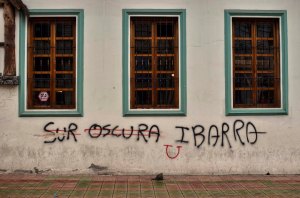
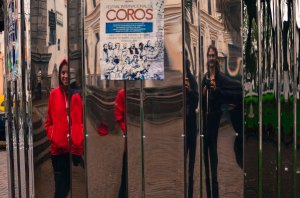
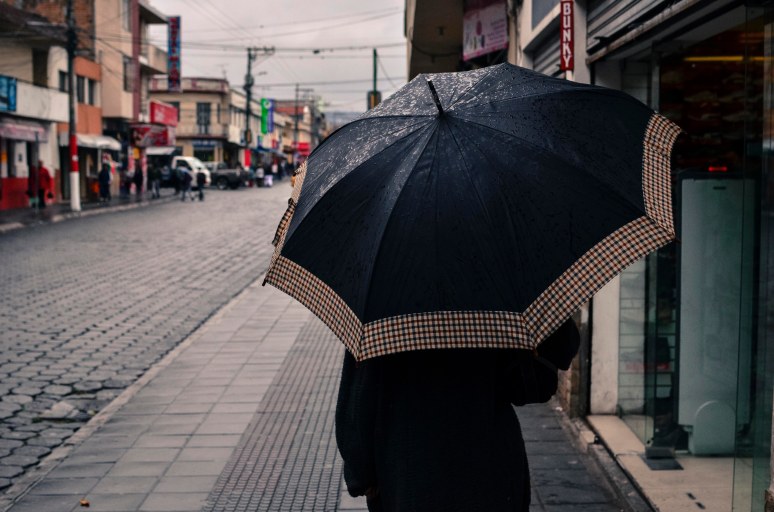
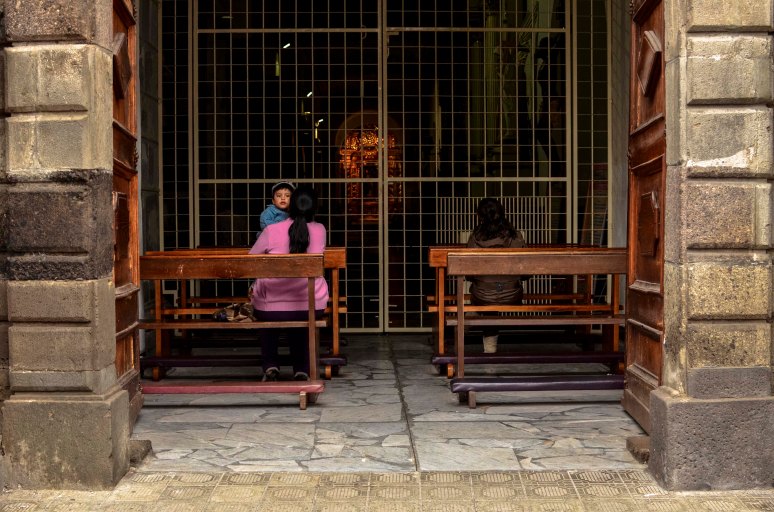
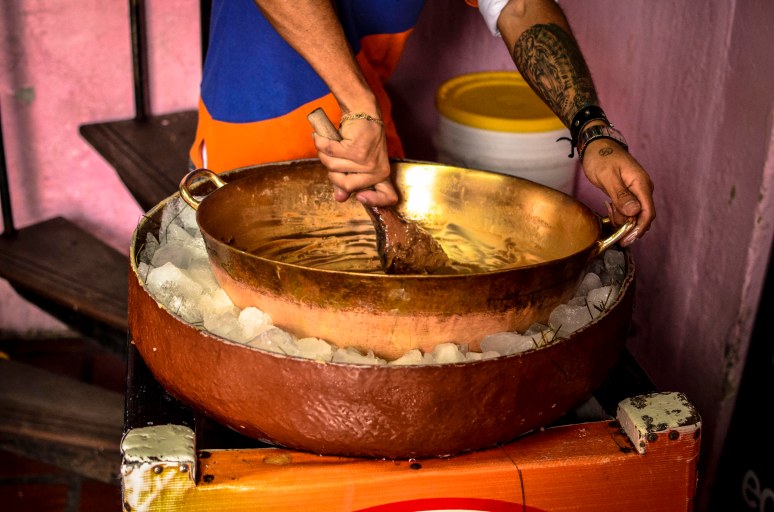

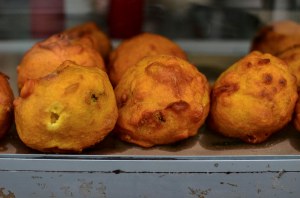


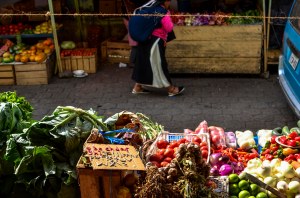




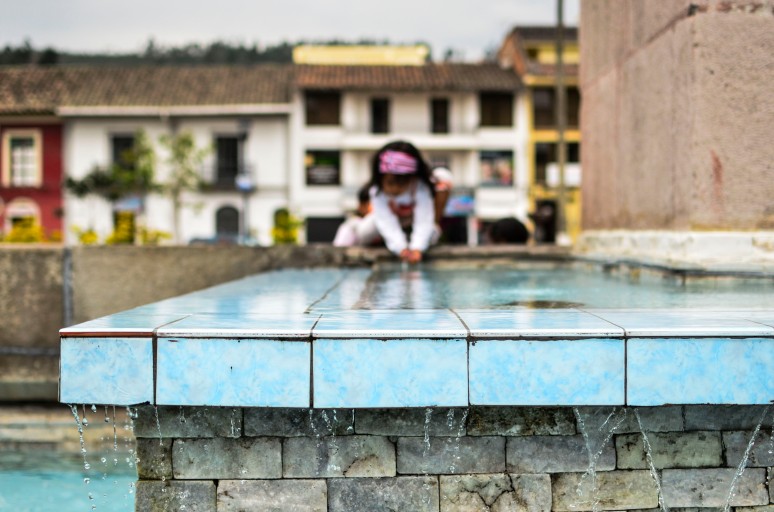



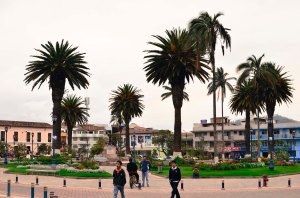





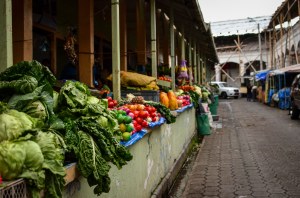







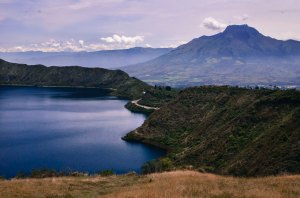


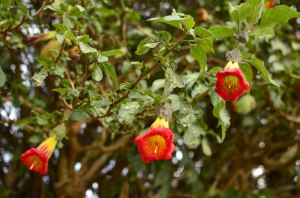



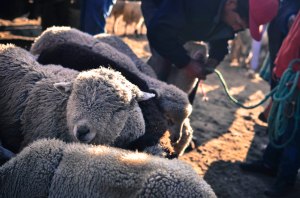
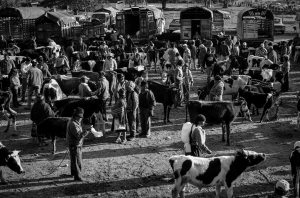
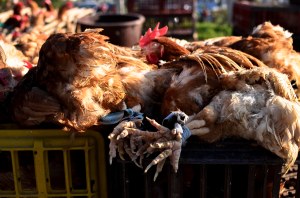
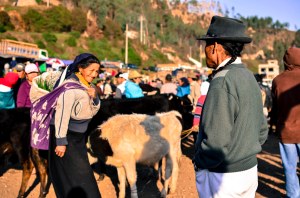
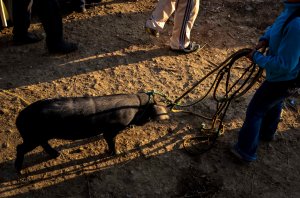



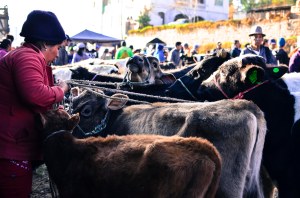
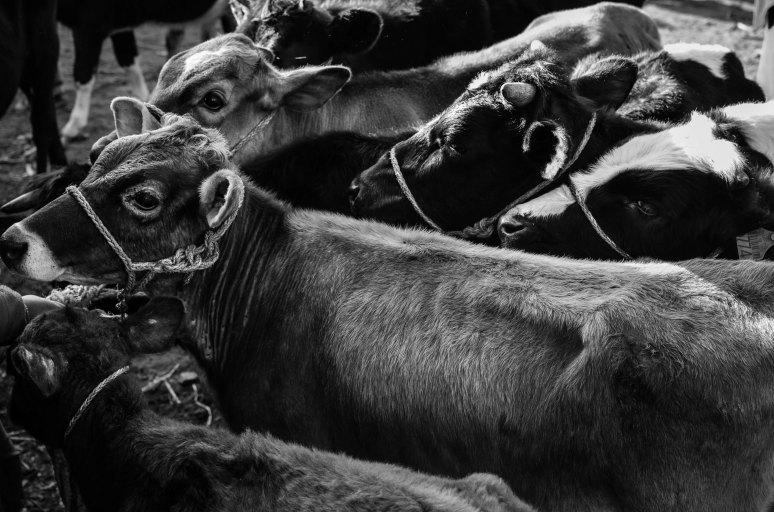














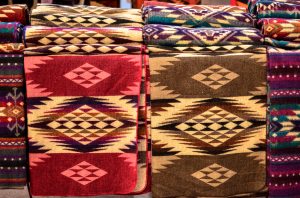






What an incredible journey and lovely photo collection to match 🙂 Thank you!
Such great pictures and story! It was actually like being in the market,thanks for sharing!
Stunning photos!!
Outstanding post! You really have a way with words in this entry, and I agree with what you wrote about the light. Enjoy Ecuador!
What an wonderful journey and amazing photo 🙂
Fantastic virtual tour! I love the photos from market… 🙂 And interesting text. Thanks for taking me there! Bye. Kamila
Love the pig on a rope!
Amazing pictures….I love South America….have a look at my blog 🙂 regards
Hello! First and foremost, I’m very jealous of your trip! It looks amazing!
I’d love to one day also be able to explore the world more and get to know what’s out there..
I’m currently studying abroad in Rome and have not had the opportunity to get to know more than just this area due to financial setbacks… I started a gofundme to help me raise money to travel a little more. Any donation would help!!
http://www.gofundme.com/gveh2c
What a nice photograph.
Amazing!
Cheers from Hawaii Hotel
Your words take me back to the time I spent at the live market. It is a sensory experience one doesn’t forget. Unfortunately, it had rained excessively, and we were sloshing in the mud. The animals and people didn’t seem to mind. As you say, business is business. I’ve traveled Ecuador twice with expats and love the country.
Amazing photos 😀 This looks like a truly amazing place to visit. Thank you for sharing!
AMAZING pictures!!! Congratulations:) Really makes me feel like going to visit South America so much!
What a beautiful post. Wishing I will be able to travel this far and write a blog as good as this one in the future 🙂
What a breathtaking place to visit. Stunning pictures!
Amazing and inspiring pictures! Up close and personal…